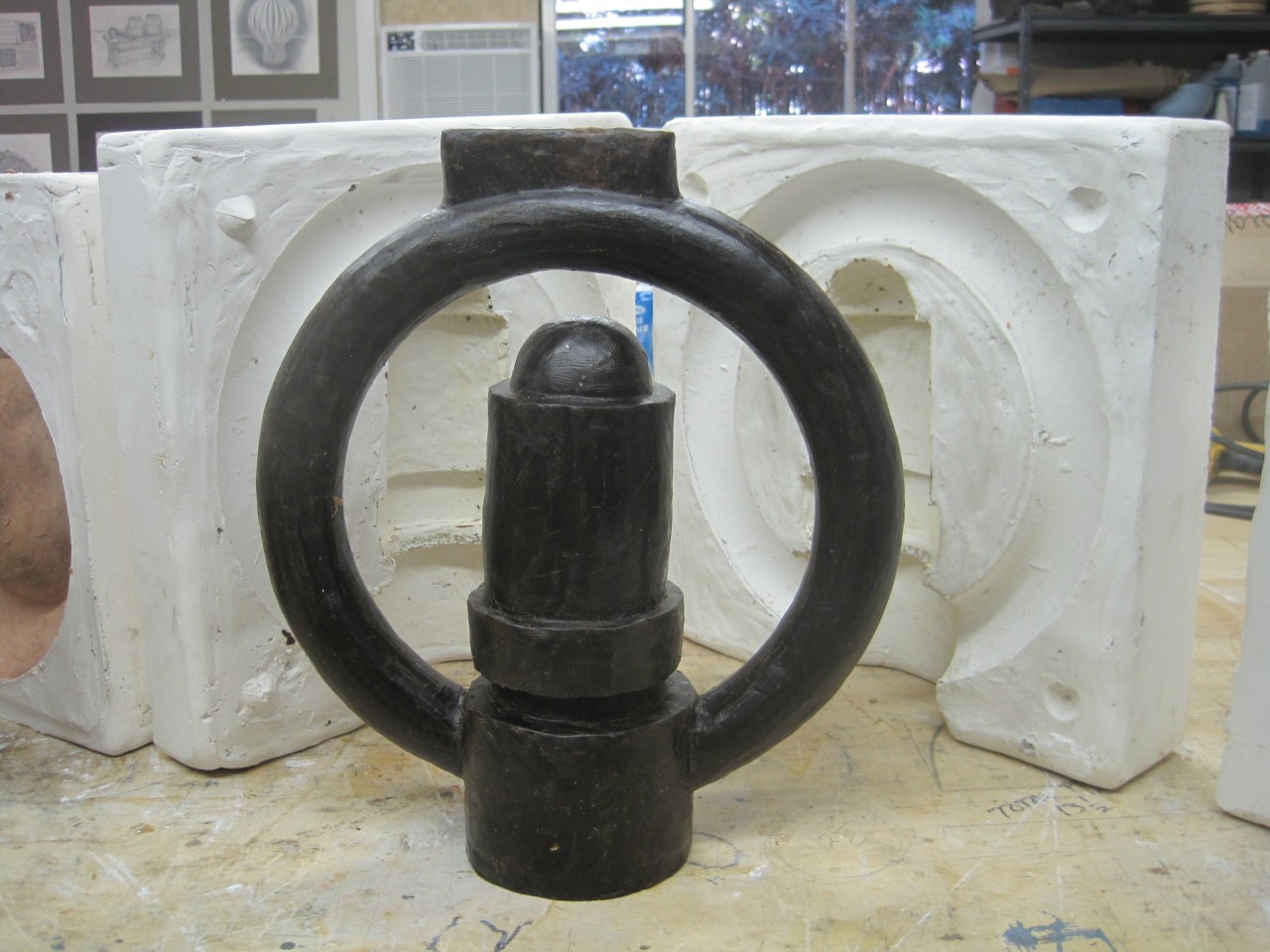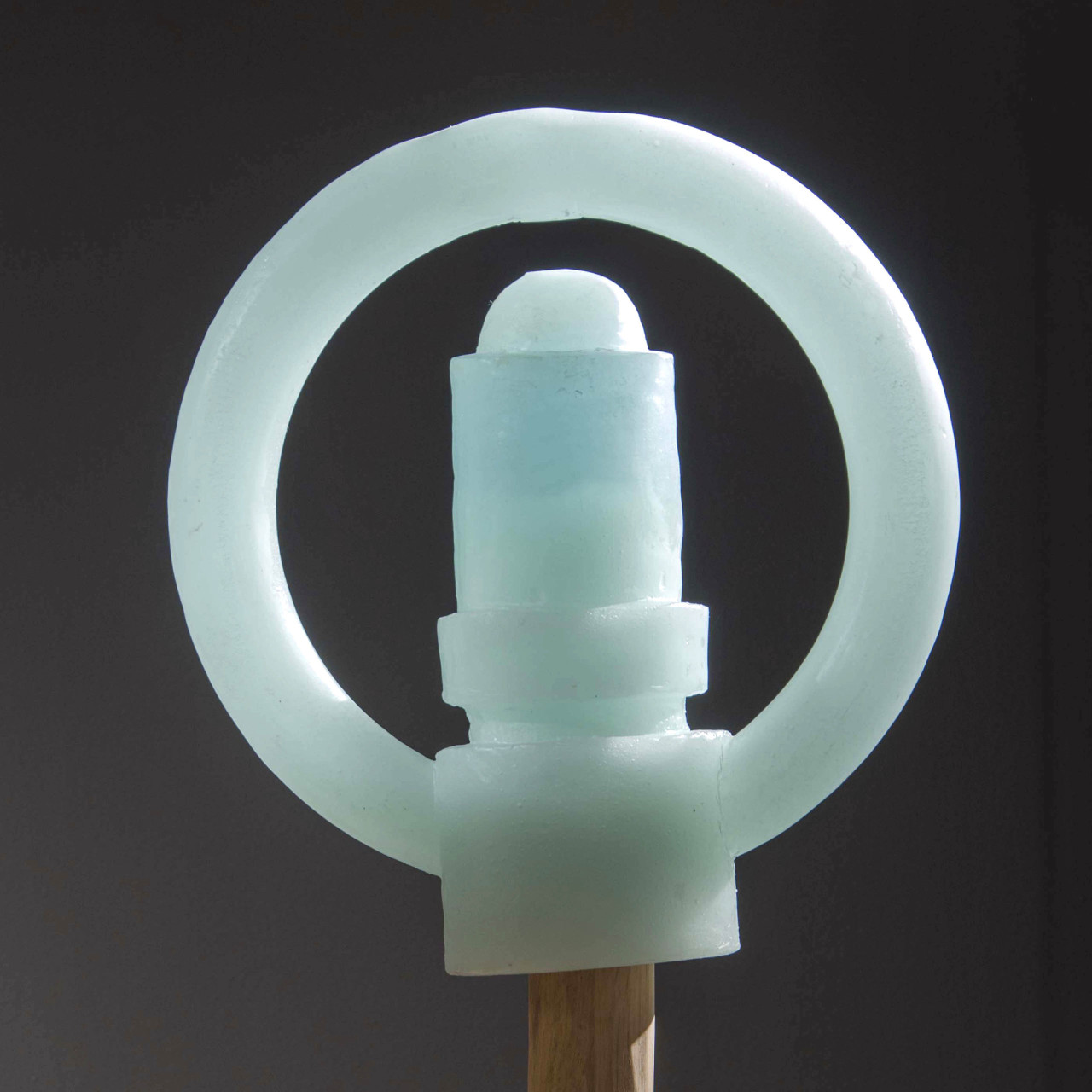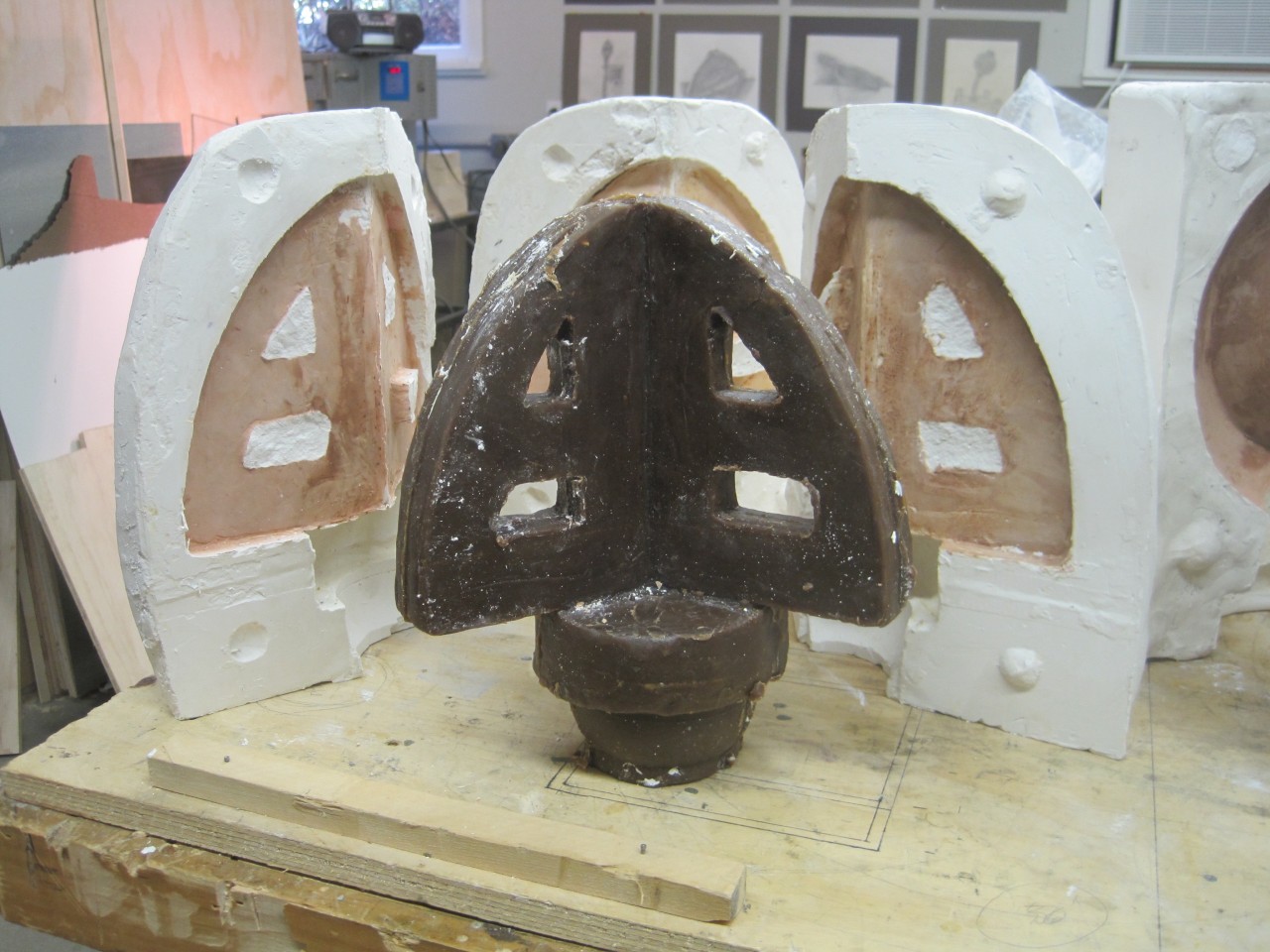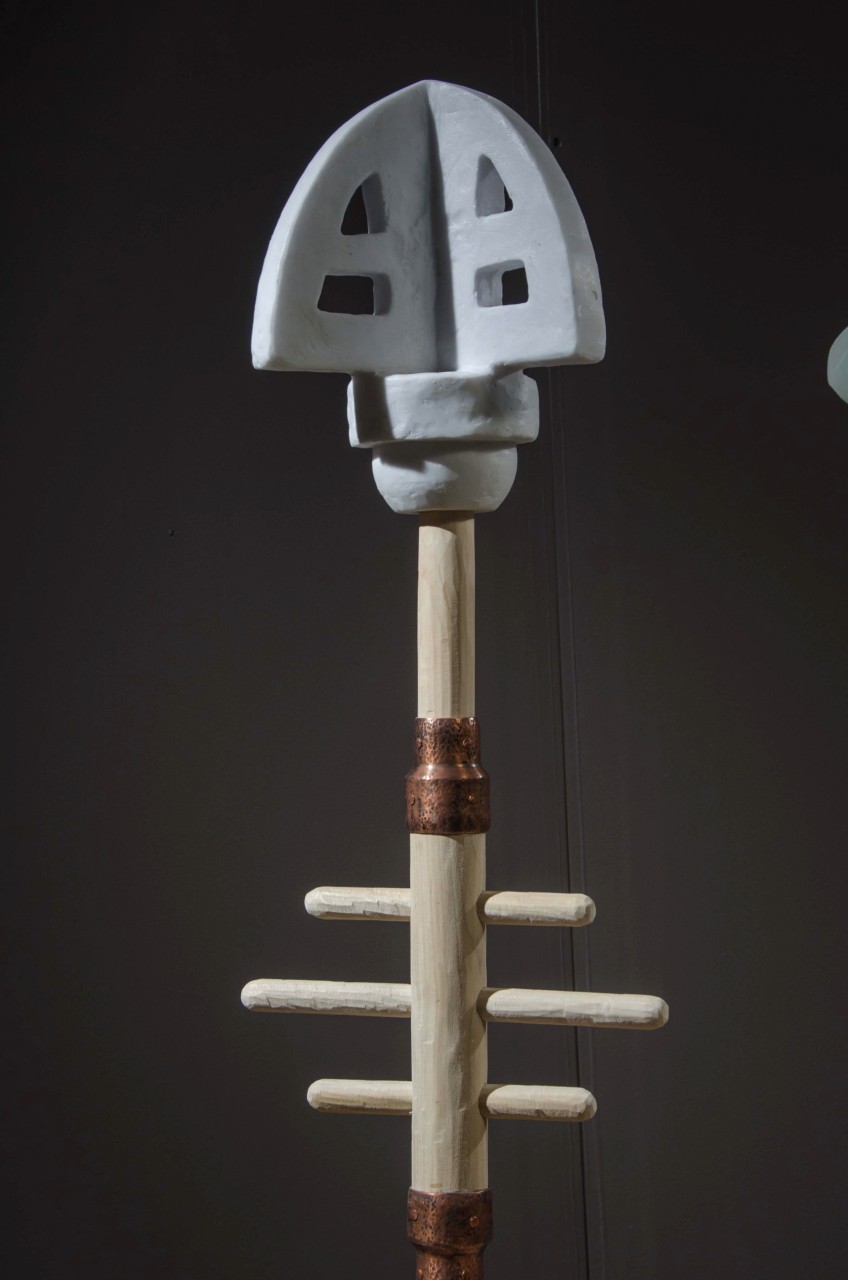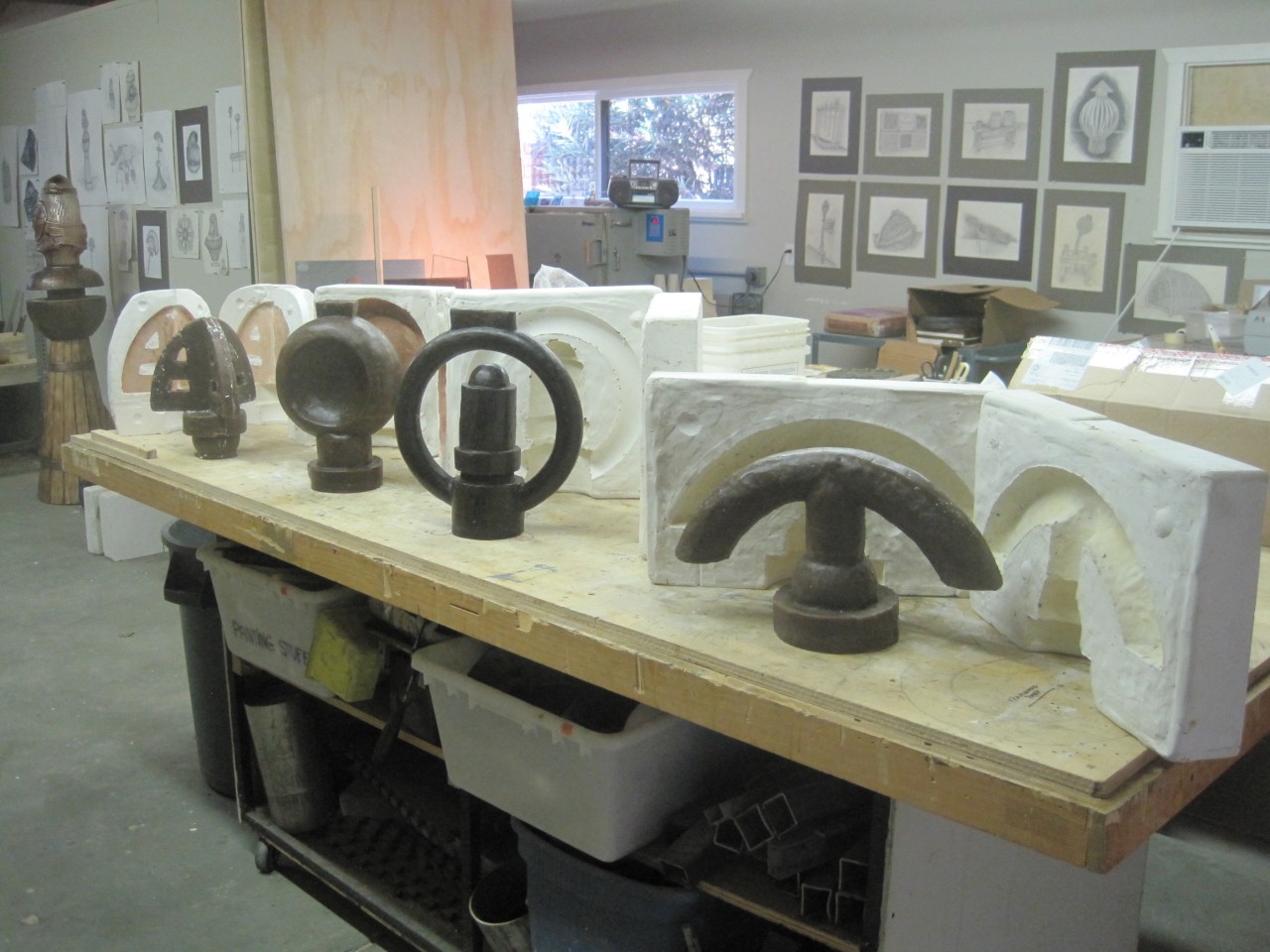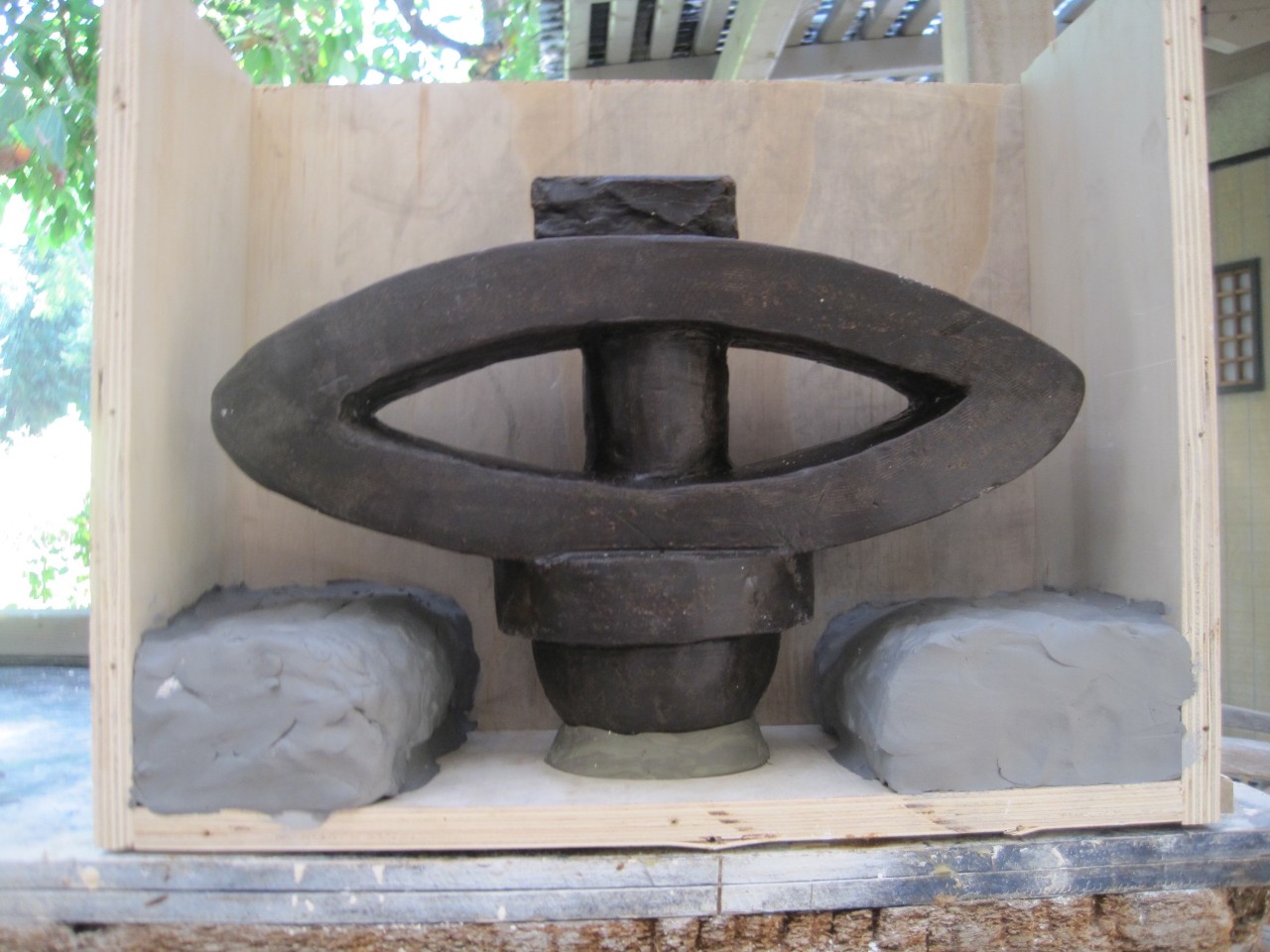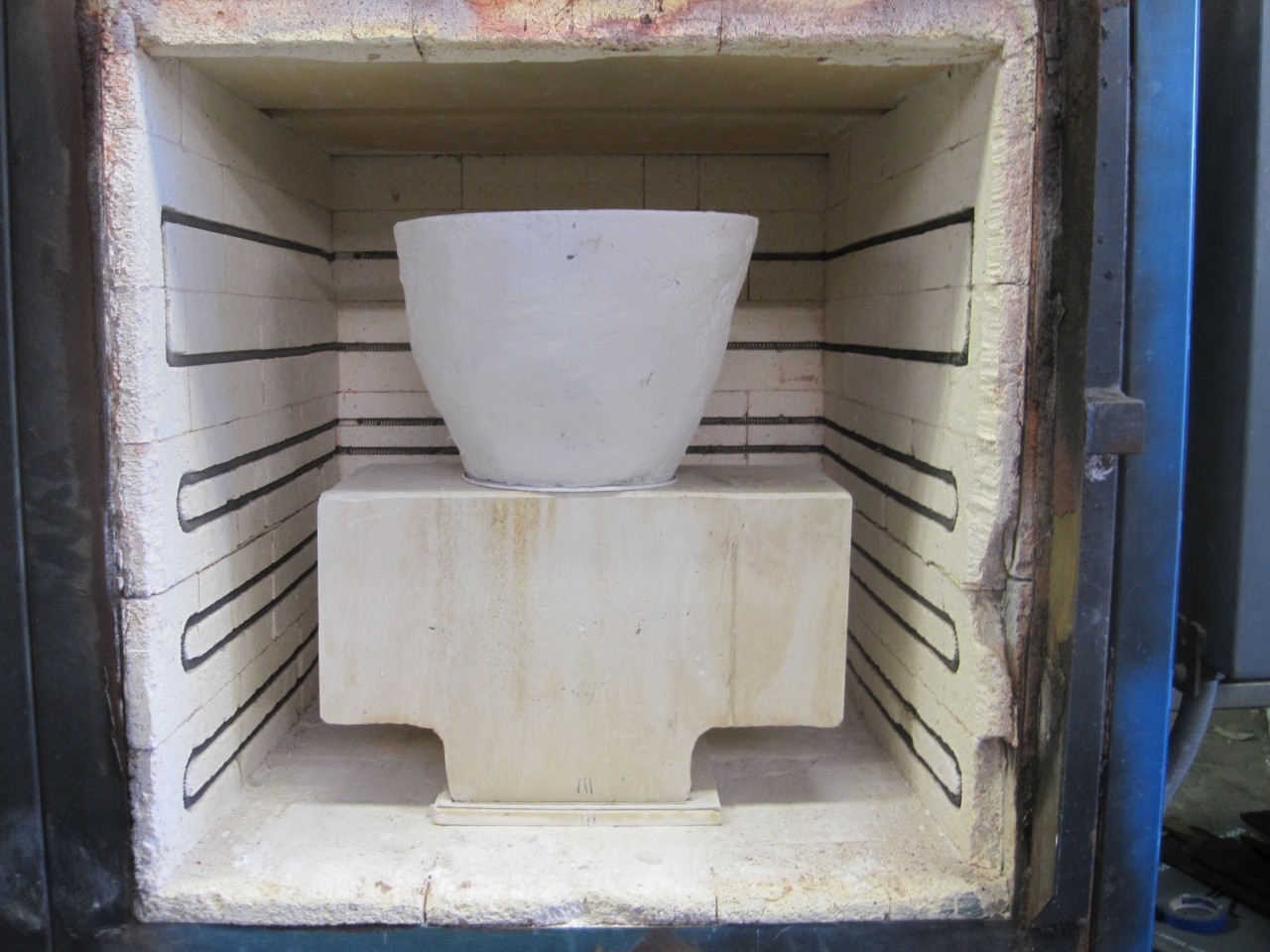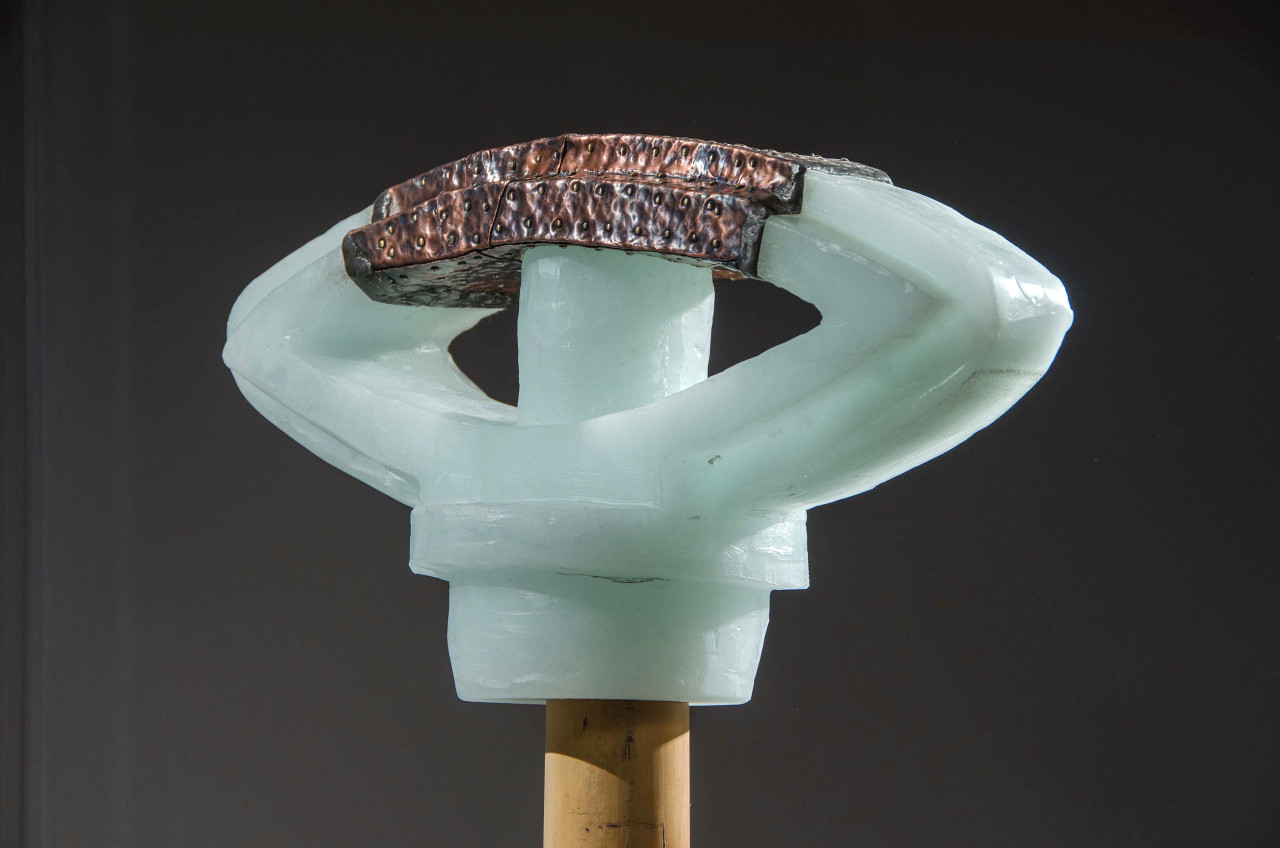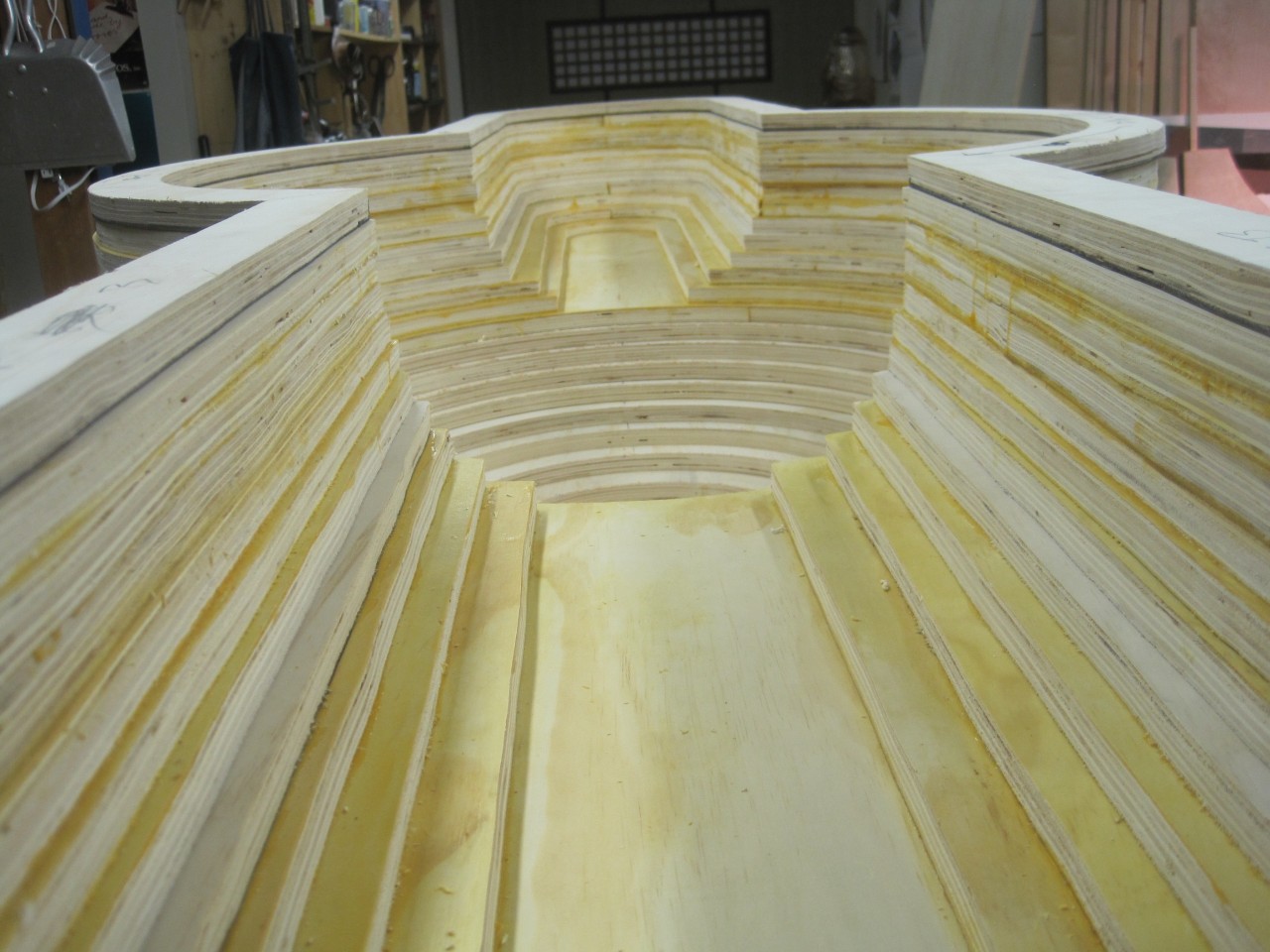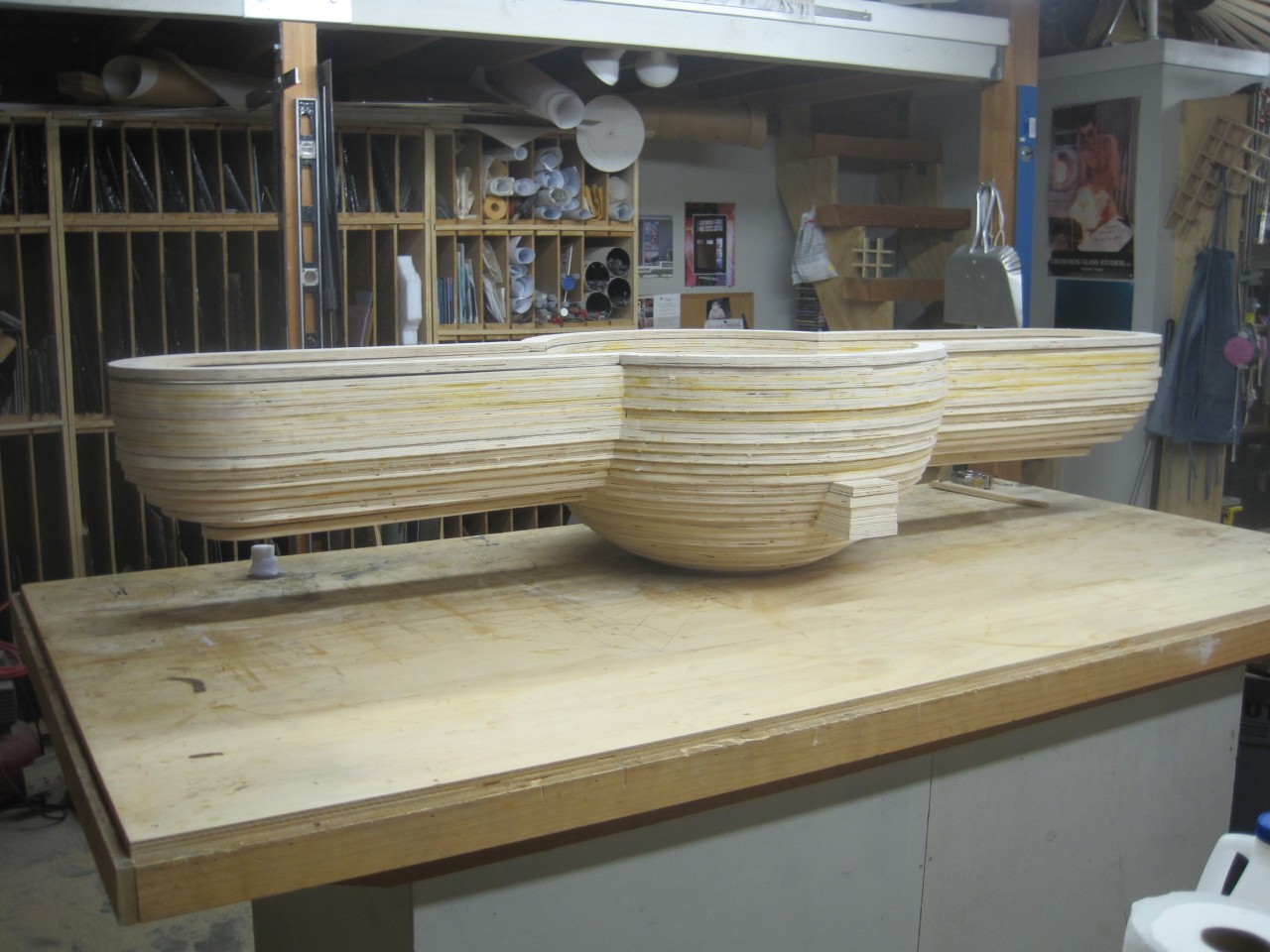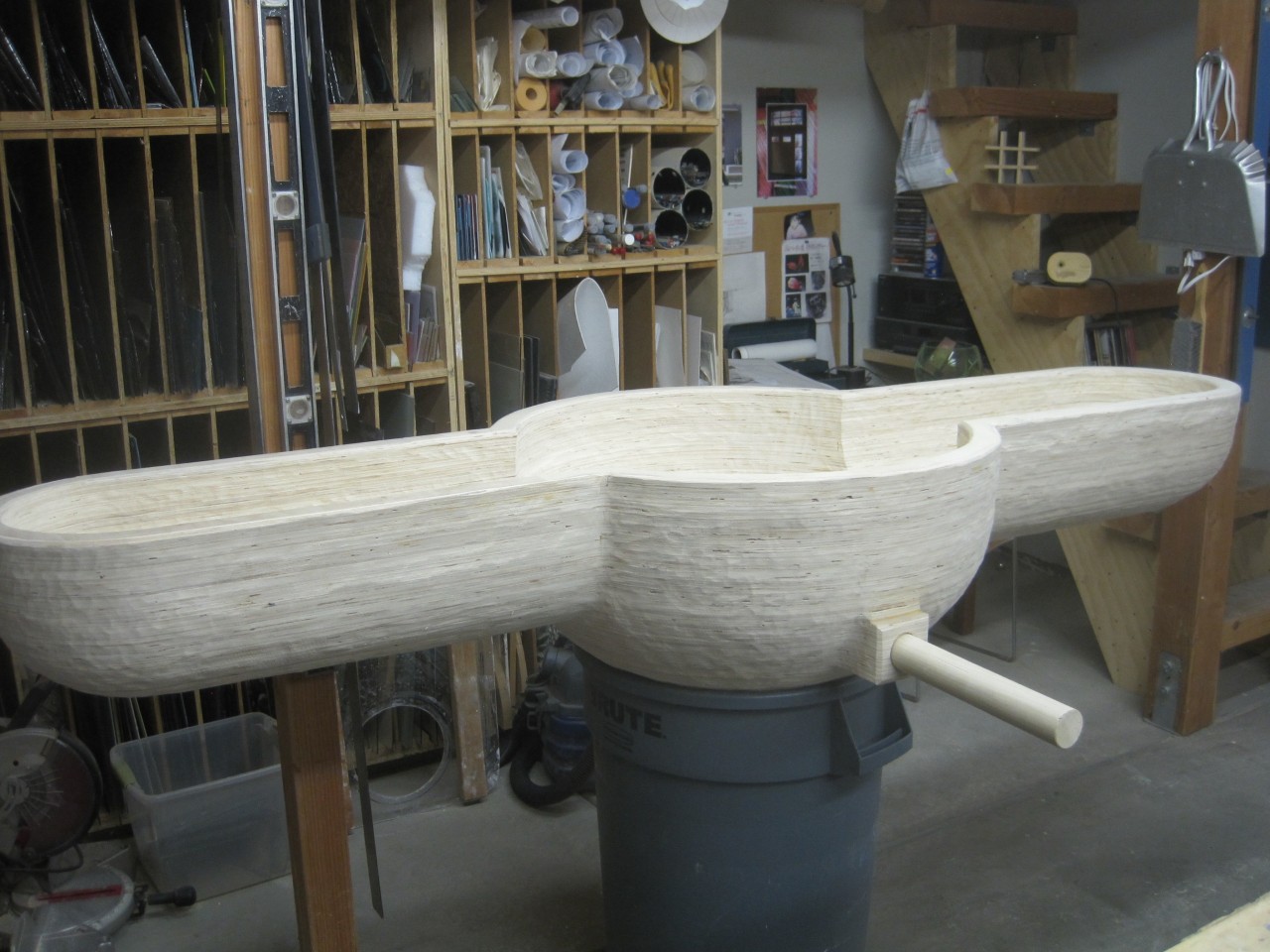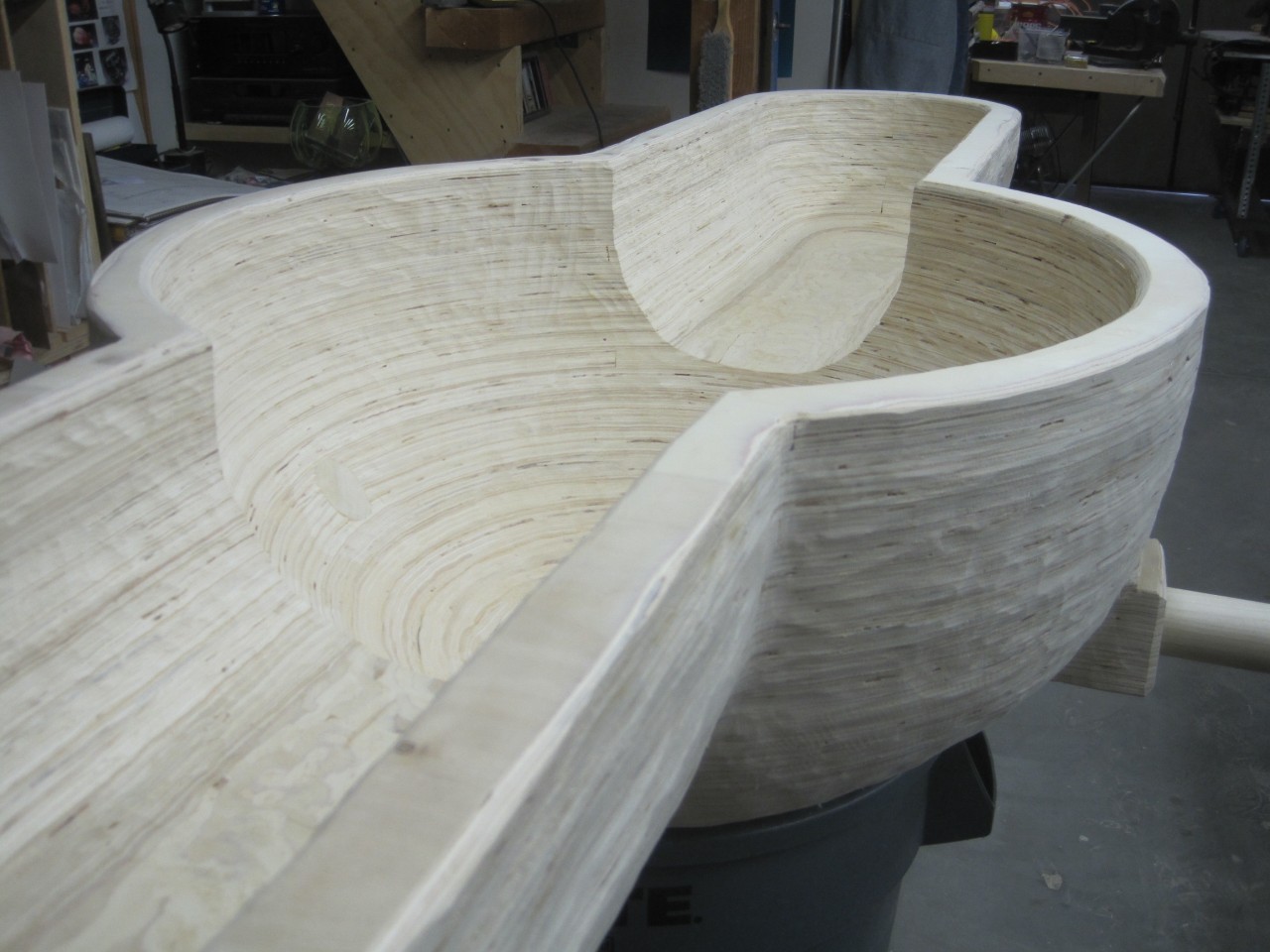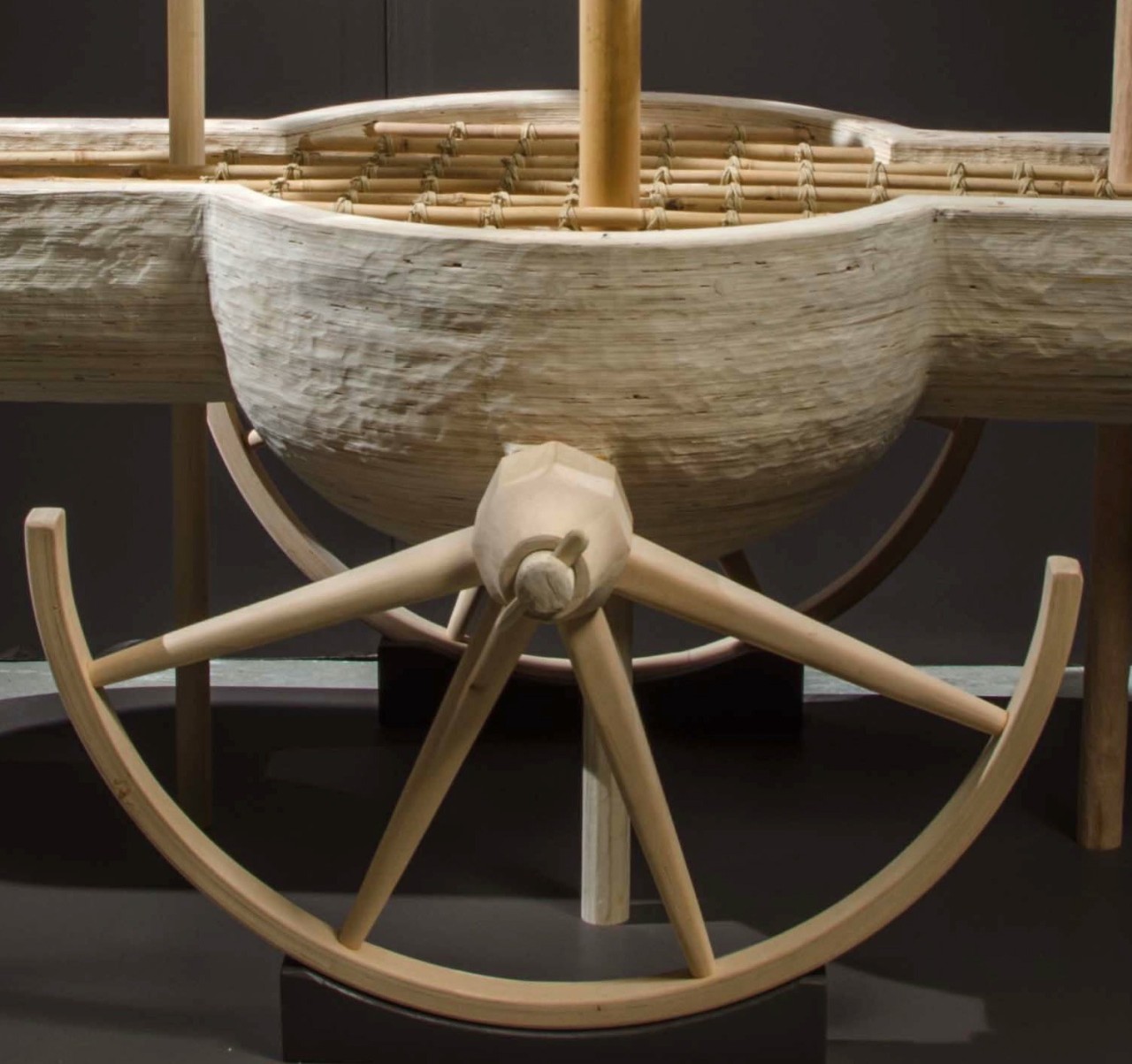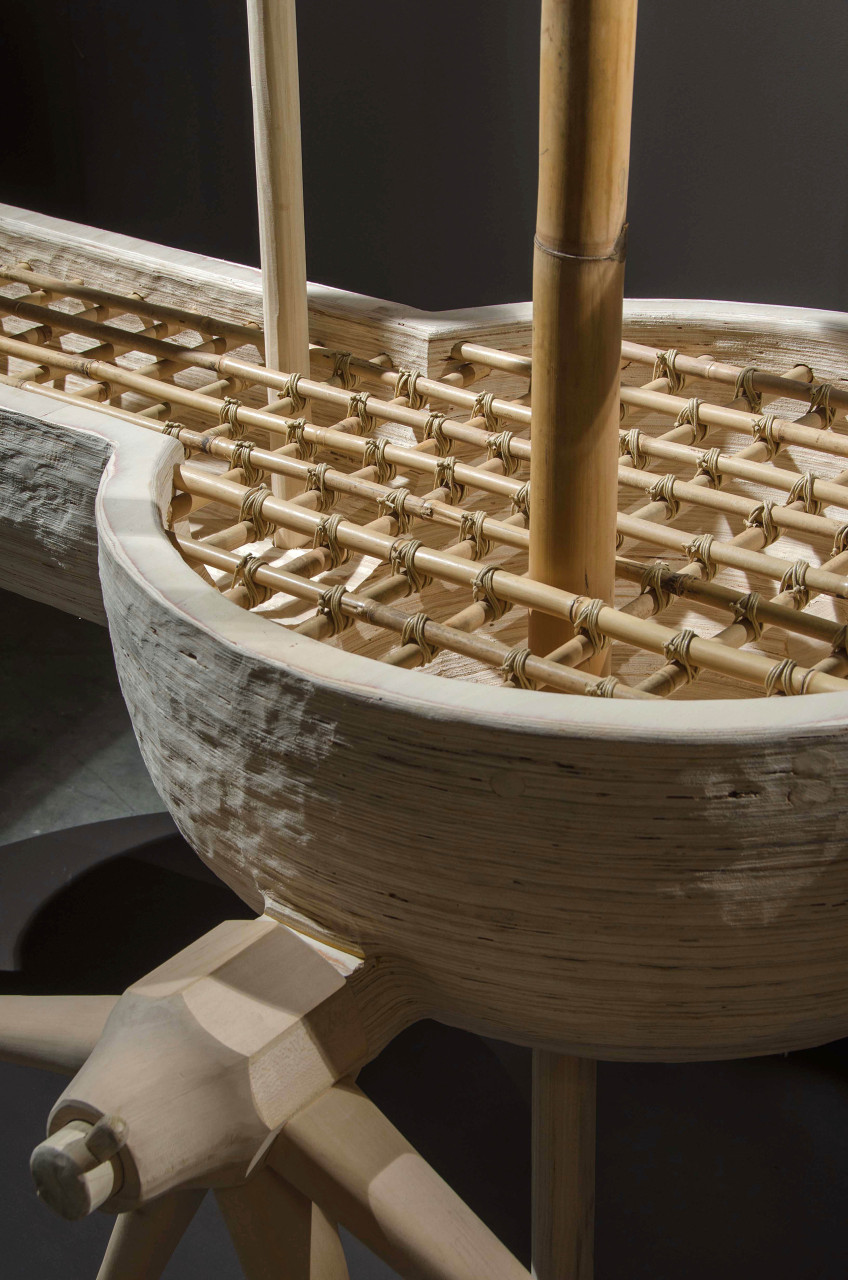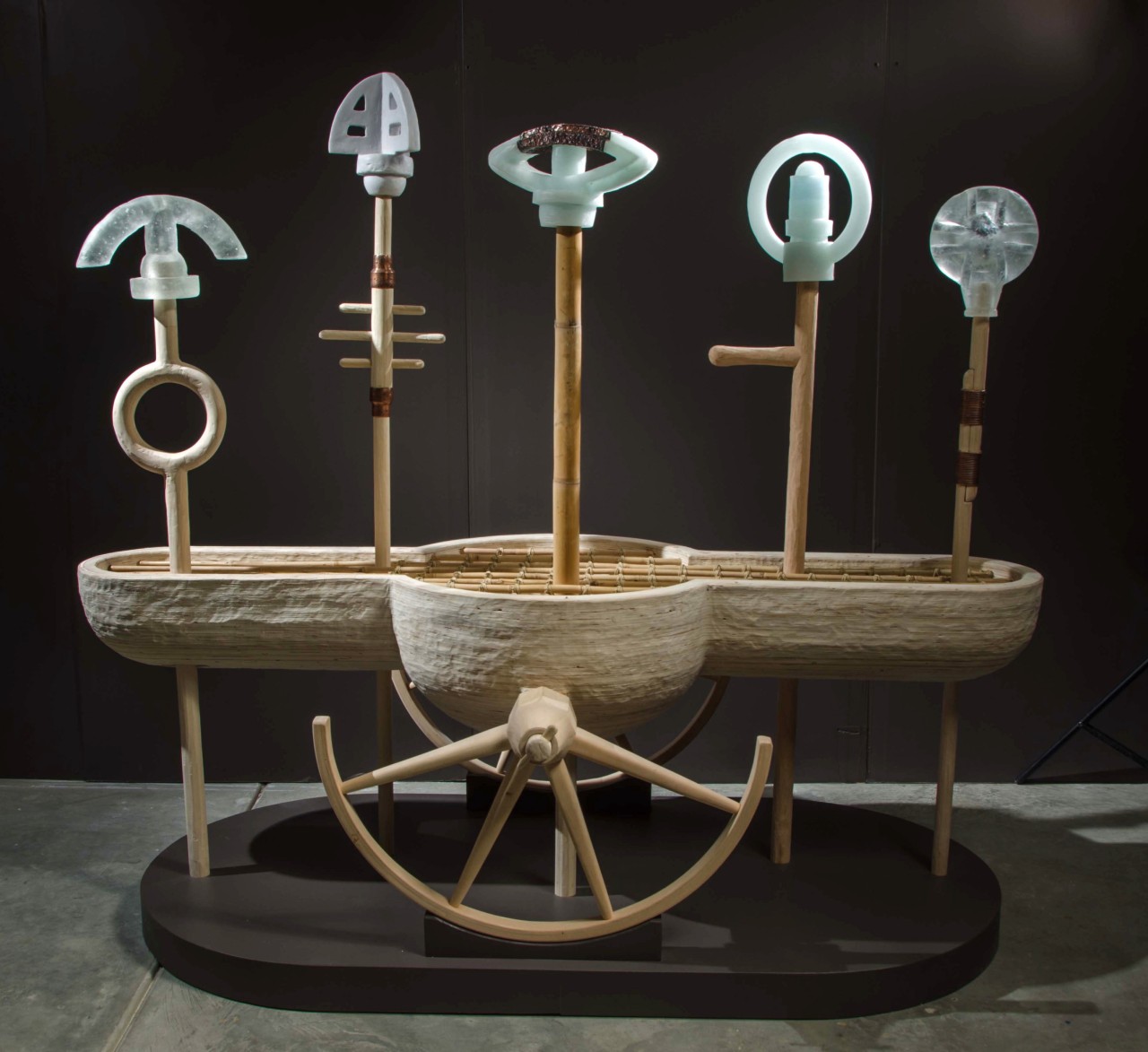Making the Itinerant Tinker
The glass elements in Itinerant Tinker were each cast at least twice. In the “practice what you preach” category, I first used the “monolithic pour” (see photos) mold technique and suffered numerous failures. I recast each piece, using the method that I have taught my students for many years; making the molds from several layers of plaster and shredded fiberglass. Much better results.
At some point, early in this process, I saw a beautiful old hand-colored photograph of a Japanese basket/broom salesman with a human powered cart loaded 10 feet high with wonderfully shaped woven baskets and other things made from fiber. The cart inspired the title for the piece and suggested the “vehicle” that would serve as the bottom half of the sculpture.
I laminated dozens of layers of pine plywood cutout shapes to create a canoe-like form. The rough glued form had stepped surfaces, inside and out. I used a cool convex grinding wheel that I ordered from a taxidermy supply to grind the entire surface. I liked the chiseled-like finish produced by the “medium” grit wheel especially when a gallery director, on a studio visit, asked me if it was limestone!
I made a kind of lathe out of my ½ inch electric drill. A 6” block of basswood was cut into an octagon. An 8” long bolt thru the center allowed me to chuck the entire block into my drill motor, which I had clamped in my large bench vice! My wife pulled the trigger on the variable-speed drill to a slow speed and I used my 4-inch belt sander with a 60-grit belt as a “lathe tool” to shape one end of the hexagon to a tapered cylinder. Worked like a champ. I plugged the bolt hole with a dowel and used a 2” hole saw to drill a hole (half way in from each end) through the center of the wheel hub. I cold bent 1/8” thick layers of basswood and glue-laminated them in a plywood jig to produce the wheel rim. The process of making these basic wooden boat and wheel forms gave me new admiration for, wheelwrights, wooden boat builders, carriage, wagon, coach, chariot, and all other builders of wooden, horse-drawn transport.
I drilled holes around the top of the plywood “boat” and created a grid of bamboo. My wife tied each intersection with waxed cotton string while I plugged all the holes with dowels to create a kind of “deck” with plenty of holes to allow the “masts” to pass through. Each cast glass element was supported on a pole made from a different kind of wood. The piece is easy to assemble, with “no tools required”.
